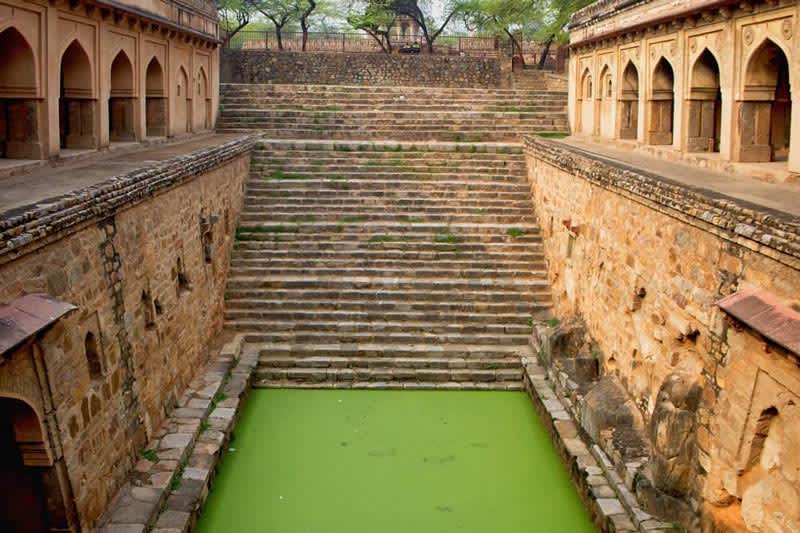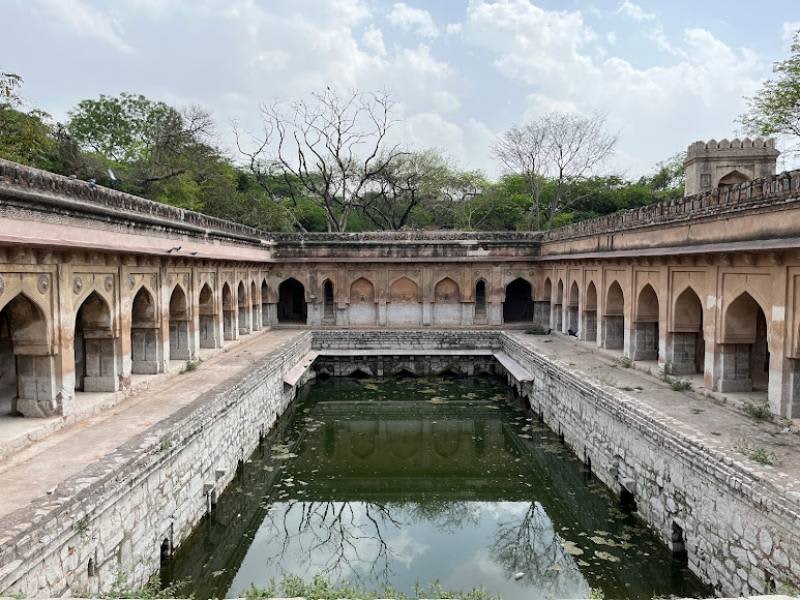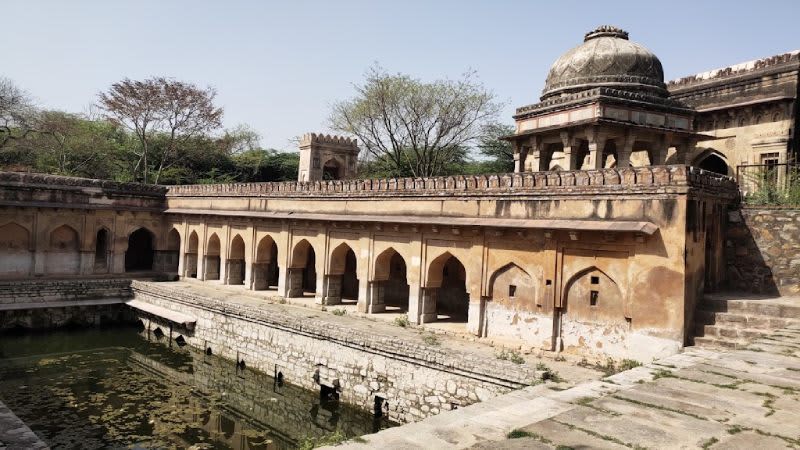 Delhi
DelhiBuilt During The Time Of Sikander Lodhi, Take A Peek Into The Royal Rajon Ki Baoli In Mehrauli
Ever wonder what life was like before indoor plumbing? Imagine a time when you couldn't just turn a tap and get a splash of cold, clean water. Back then, architects and master masons were basically on a never-ending treasure hunt for water. They dug deep, seeking out wells and other sources to keep everyone, especially the nobility, from getting parched. Our ancestors had to get creative to quench their thirst, which makes us appreciate our modern conveniences even more!
What Are Baolis Anyway?

Picture Credits: harshitgangal
As far back as 600 AD, architects were making baolis (step-wells), by digging deep to reach sources of groundwater. As time went by, the architects would secure the ‘well’ dug up by them with stones at the circumference. Since the water source was often rather deep, especially in dry places like Delhi, a series of steps would be built deep towards the well, for people to descend and draw water from.
With time, the use of baolis evolved from merely sources of water to places of recreation, a refuge from the punishing tropical heat. The early medieval kings of India built arched colonnades around the steps, where they could relax away from the scorching sun and their use survived even after the Muslim warriors of Central Asia came to India on their conquests.
About Rajon Ki Baoli

Picture Credits: Dr. Rakesh Kumar
The Qutub complex in Mehrauli is a history buff’s delight! Monuments of every description are scattered in the area, each of immense historical significance - the Qutub Minar, a remnant of the first Delhi Sultanate dynasty, lies not far away and some ways ahead is also the Dargah of Qutb-ud-din Bakhtiyar Kaki, the man who brought to Delhi the legacy of Sufism which survives to this day.
The Rajon Ki Baoli is a stepwell that has its own niche among these monuments, as a relic of the last pre-Mughal dynasty, the Lodhis. It is believed to have been built by Daulat Khan during the time of Sikander Lodhi and is said to have been used for some time by Raj Mistri (masons). Pluralised, that is how the structure got its name. Since most of the structure is subterranean, only the topmost storey is visible above ground. Cool!
Unravelling The Complex Design

Picture Credits: alam_07
The first impression you get is of a medieval courtyard surrounded by a many-pillared verandah, arches done in the stylized fashion peculiar to North India at the time. To watch the mysterious building unravelling its secrets is an experience that is not to be missed. With each step you take farther in, there are more verandahs at each level; each succeeding underground level is a lot cooler than the previous one. While the water is no more as portable as it must have been once, the place is a rare haven of peace.
If Rajon Ki Baoli is the first structure of its kind that you visit, waste no time in seeing the other famous ones here in Delhi too! If you like your travels to include out-of-the-way, quaint destinations, include similar ones at Nizamuddin and the Agrasen Ki Baoli near CP as well!
Where | Rajon Ki Baoli - Mehrauli Archeological Park Trail, Mehrauli Village, Mehrauli
Timings | 10 AM - 5 PM
Like
Bookmark
Share

